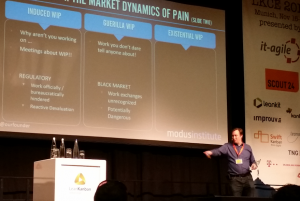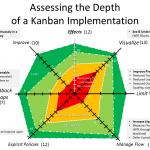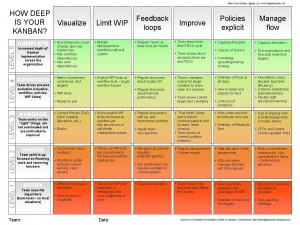No worries – these LKCE2015 posts won’t be as long as the first one… the talks (videos) have been published online now so these posts will be about what I liked about the talks and how they resonated with me instead of summerizing them.
First off; Jim Benson – I say “limit WIP”, you say “Seriously?”. He was introduced as the stand-up comedian of the leankanban community so expectations for this talk were high on the entertainment scale (and yes – he delivered).
 Jim presented some very interesting stuff introducing several types of WIP and different ways of handling or management needed for each form. Very recognisable story (since I’m always the annoying guy telling people that working on 10 things for 10 differents people is the surest way of disappointing at least 9 of them). Limiting WIP is hard – and what kind of WIP are we actually talking about? Ah well… its a great talk – you’ll recognise a lot no matter what your role in the organisation is – so just go and see it! Really – just go… it’s ok and the rest of this text will be here until you get back 🙂
Jim presented some very interesting stuff introducing several types of WIP and different ways of handling or management needed for each form. Very recognisable story (since I’m always the annoying guy telling people that working on 10 things for 10 differents people is the surest way of disappointing at least 9 of them). Limiting WIP is hard – and what kind of WIP are we actually talking about? Ah well… its a great talk – you’ll recognise a lot no matter what your role in the organisation is – so just go and see it! Really – just go… it’s ok and the rest of this text will be here until you get back 🙂
There were some fun (and great) takeaways from this talk; and one that resonated big time with me was his remark on the product owner (around 34:25 in the video):
“I said this before, but the product owner is actually the single worst invention in software development history”
Jim Benson during LKCE 2015
To be clear; this wasn’t the single core point made in his talk (not even close) – but it was one of the many things that clicked for me as it relates to the stuff I currently work on. Anyways – I was as “shocked” as the rest of the audience when he said this but this changed to relief on my side pretty to soon. The reasoning behind this statement was the question how it was ever considered a good idea to have one single person know and decide all for a systemen?
I realised that at my current client we actually ran into this and thought of a workable solution for this. What happened is that to allow the product owner to make meaningfull decisions (which actually affect his performance for his client) we ended up with product owners who have mandate over a complete chain of systems from and to the organisations clients. That’s a big scope so the downside to this is that it quickly gets to hard for the PO to know about every detail on everything in his scope. This organisation solved this by providing the PO a team with people who know about these systems and the proces they are adding value to. This team (called a business team) and the PO together act and do the PO job… it’s just the PO who has mandate once someone needs to make a decisions that turns out not to be easy (which I’m convinced won’t happen a lot when you actually think about the work, visualize or order it on a backlog). The business team and the PO do the backlog grooming and all the preparing work for the Delivery teams. Delivery teams which are btw dedicated to that PO and business team (so teams still don’t have more then one PO).
Anyways – don’t shoot me on not following some exact theory or method here, yes we do still run into problems with this setup as well – but main thing: for now it seems the be the best fitting way that works best for most of our teams 🙂
Ah and finally – did I mention this already? Go see the video! (and check him out on twitter as well – his twitter name is @ourfounder)


 I remembered David Anderson presenting a radar chart as a way to plot the maturity of a Kanban implementation during the Kanban coaching masterclass I attended. Trying to re-discover some of that I ended up at
I remembered David Anderson presenting a radar chart as a way to plot the maturity of a Kanban implementation during the Kanban coaching masterclass I attended. Trying to re-discover some of that I ended up at 